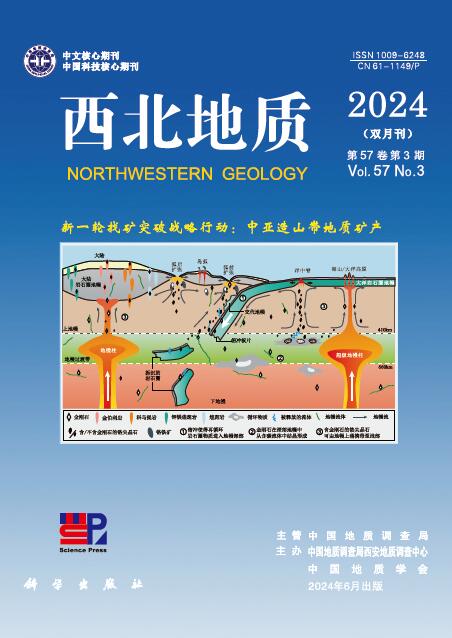| Citation: | LI Kangning, TANG Qingyan, LUAN Xiaogang, WANG Yuxi, DENG Xiaohua, YANG Zongfeng. 2024. Tectonic Setting and Provenance of Sandstones from Triassic Daheba Formation in the West Qinling Orogenic Belt. Northwestern Geology, 57(3): 113-127. doi: 10.12401/j.nwg.2024035 |
Tectonic Setting and Provenance of Sandstones from Triassic Daheba Formation in the West Qinling Orogenic Belt
-
Abstract
The Daheba formation is the latest strata exposed in the Xiahe-Luqu area of the West Qinling Orogenic Belt (WQOB), with recording the Indosinian regression event. In this study, based on the stratigraphic sequence characteristics, major and trace element compositions and zircon U-Pb dating of the sandstone, we traced the origin of the sandstone and explored the tectonic settings of the Daheba Formation. The Daheba Formation consists of feldspar sandstone, lithic feldspar sandstone, conglomerate clastic feldspar sandstone. The SiO2 content of sandstone range from 64.11% to 68.72% with an average of 65.45%. The sandstones are also characterized by high Al2O3 (13.61%~15.19%), lower Fe2O3 (0.82%~1.72%), CaO (2.393%~3.32%) and MgO (0.06%~0.1%) contents. They have high rare earth elements (REE) range from 184.13×10−6 to 434.06×10−6, and show negative Eu anomaly in the chondrite normalized diagram. They also have similar Th, Zr, Ti, and Co, Ni compositions with that of active continental margin sediments. The detrital zircon U-Pb ages from the sandstones are mainly concentrated in 253.3~448.7 Ma, 1536~2067 Ma and 2204~2520 Ma, and show five age peaks at 278.2 Ma, 448.5 Ma, 1757.6 Ma, 1986.4 Ma and 2445 Ma, with the youngest ages at 253.3 Ma. These indicates that the Daheba Formation was deposited in an active continental margin setting, and the detritus originated from the upper crust igneous rocks. The main sources for the detritus is possibly of the basement of the northern Qinling, the eastern part of the Qilian, and the southern edge of the North China Plate in the northern parts of the study area with small parts from the magmatic rocks and polycyclic sediments in the West Qinling.
-

-
References
[1] [2] [3] [4] [5] [6] [7] [8] [9] [10] [11] [12] [13] [14] [15] [16] [17] [18] [19] [20] [21] [22] [23] [24] [25] [26] [27] [28] [29] [30] [31] [32] [33] [34] [35] [36] [37] [38] [39] [40] [41] doi: 10.1086/628815
[42] [43] [44] [45] [46] [47] [48] [49] [50] [51] [52] doi: 10.1130/B26606.1
[53] doi: 10.1007/BF02959447
[54] [55] -
Access History

- Figure .
-
Figure .
大河坝组基本层序
-
Figure .
大河坝组砂岩宏观露头特征及显微照片
-
Figure .
研究区中晚三叠世大河坝组砂岩锆石阴极发光图像及打点位置
-
Figure .
砂岩SiO2/ Al2O3-Na2O/K2O(a)和Fe2O3/K2O-SiO2/Al2O3(b)分类图解
(底图a据Roser et al.,1988;底图b据Herron,1988) -
Figure .
稀土元素球粒陨石标准化配分图解(a)和微量元素原始地幔标准化蛛网图(b)
(标准化数据据Sun et al.,1989) -
Figure .
大河坝组组碎屑锆石年龄谐和曲线图(a)和年龄分布直方图(b)
-
Figure .
砂岩构造环境(Na2O+K2O)-SiO2(a)和Al2O3/(CaO+Na2O)-(Fe2O3T+MgO)主量元素判别图解(b)
(底图a据Roser et al.,1988;底图b据Bhatia,1983) -
Figure .
大河坝组微量元素源区构造环境判别图(底图据Bhatia et al.,1986)
-
Figure .
大河坝组砂岩物源属性判别图解(底图a据Roser et al.,1988;底图b据Pettijohn et al.,1973;
底图c、d据Floyd et al.,1987)




 DownLoad:
DownLoad: